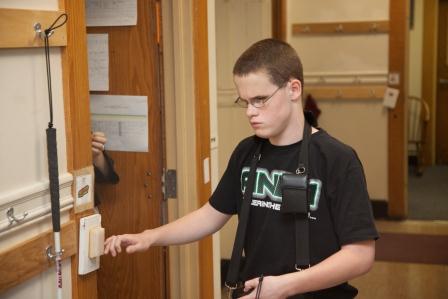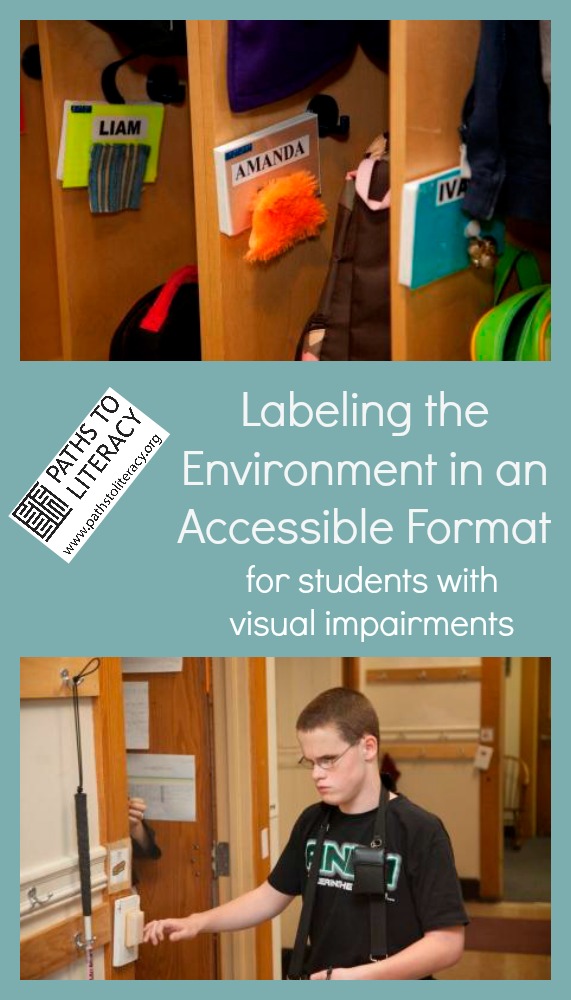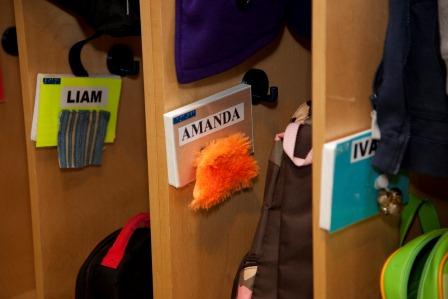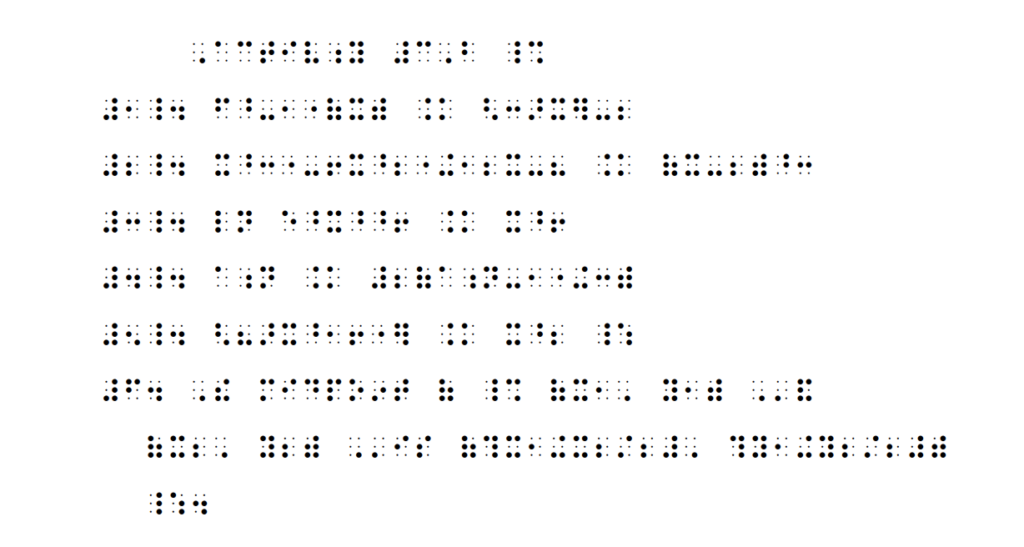Children who are blind or visually impaired need to have accessible labels in the environment. This means that labels for locations in the classroom and around the school should be in whatever format is most meaningful to the individual student, including braille, large print, picture symbols, objects or tactile symbols, or some combination. While braille and print labels are straight-forward, it is important to think carefully about tactile and picture symbols. The symbols that are selected should be meaningful to the individual child and should be reinforced during exploration and an activity. For example, if the symbol for “bathroom” is a piece of smooth tile, it is important to be sure that the child feels the tile in the bathroom and that you talk about it together and refer back to the symbol.
Object symbols can be embedded in a piece of tri-wall or triple corrugated cardboard to make them easier to distinguish. Students should have repeated exposure in order for them to be meaningful. Members of the child’s family should be actively involved in discussions with school personnel about which items in the environment should be labeled and what symbol should be chosen. When possible, try to use the same symbols across locations (school and home), so that the concept will be reinforced in all settings.
In the photo above, each child’s locker has been labeled in multiple formats, using large print, braille, and an object symbol that is unique to each child. If object symbols are chosen for an individual child, they should be used everywhere that her name appears, such as at her desk, by her cubby, at her seat in the lunchroom, etc. The photo below shows a picture symbol, print and braille labels, and an object symbol for OT (Occupational Therapy).
 There are many ways in which literacy can be incorporated into Orientation and Mobility (O & M) and it is important for all members of the team to be involved in the planning process. Together look at which locations should be labeled, such as the child’s locker or cubby, the child’s desk, the bathroom, areas in the classroom (book area, music area, etc.), and areas around the school where the child goes (the gym, library, cafeteria, etc.)
There are many ways in which literacy can be incorporated into Orientation and Mobility (O & M) and it is important for all members of the team to be involved in the planning process. Together look at which locations should be labeled, such as the child’s locker or cubby, the child’s desk, the bathroom, areas in the classroom (book area, music area, etc.), and areas around the school where the child goes (the gym, library, cafeteria, etc.)
For more information about tangible symbols see the Tangible Symbols Webcast.
Materials
- Triple-corrugated cardboard or heavy duty material to which an object can be attached
- velro
- braille and print labels
- object symbols
Procedure
- Begin by meeting as a team to discuss locations that should be labeled. Identify a meaningful symbol for each activity.
- For children who are deafblind or who have multiple disabilities, the object symbols for a given location should be put in their daily object calendar or schedule box. Then, when it is time for a given activity, the child can carry the symbol to the given location and match it to the one that is already there.
- Use simple words that are direct and clear to discuss the labels, e.g. “That’s the spoon. We use the spoon when it’s time to eat in the dining room.”
- Object symbols can be returned to the object calendar when the activity has been completed and placed in the “finished box”.
Variations
As the child becomes more able to recognize symbols, they can be faded to be more abstract.
Once students are able to consistently identify the various locations, they may not need to carry the actual symbol card with them, but can look at it in the classroom, and then go off in search of it.





